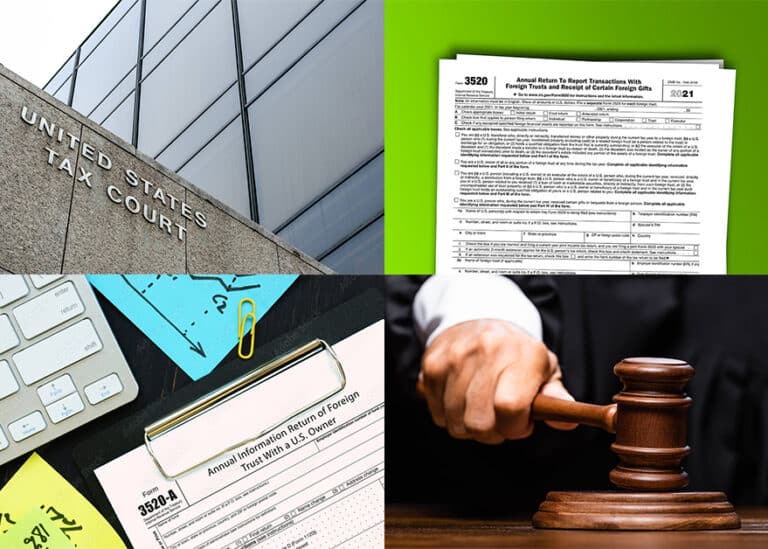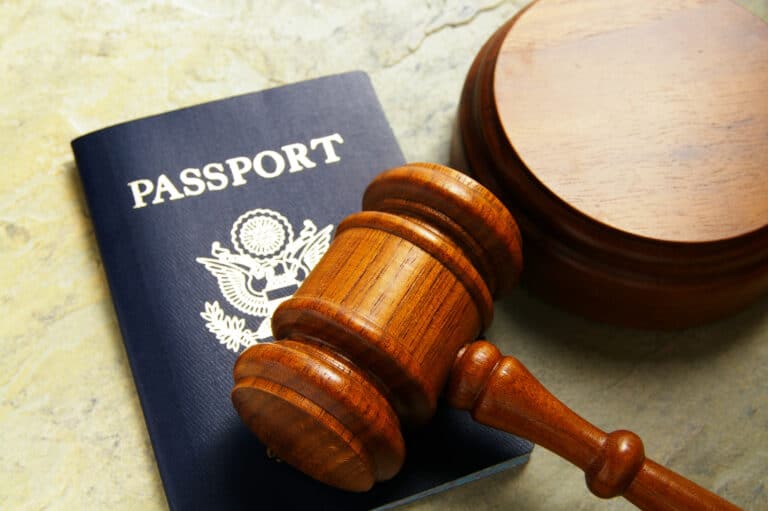Tax Court Rejects Taxpayer’s Argument That Disproportionate Distributions Terminated S Corporation Status
In order to avoid the flow-through of examination adjustments, the Taxpayer in Mowry v Commissioner[1] attempted to argue that an S corporation, in which he was a minority shareholder, had ceased to be a valid S Corporation. The Taxpayer argued that disproportionate distributions to the majority shareholder (i.e., not the Taxpayer) over several years created a second class of stock and therefore invalidated the corporation’s S election.[2] The Tax Court held that the disproportionate distributions did not invalidate the S election because the majority’s actions did not create a “binding” agreement to create a second class of stock under Oregon state law.
FACTS
The Taxpayer owned 49% of the shares of the Corporation from inception (2004) and through years at issue in the opinion (2011 and 2012). The other 51% interest in the Corporation was held by the taxpayer’s brother (“Brother”). The Corporation was a “construction company that specialized in manufacturing rebar to customer specifications and installing the product at jobsites.” Both brothers worked in the business. The Taxpayer’s wife also worked in the business. Each received a salary.
The opinion states that when the Taxpayer and Brother incorporated the company that “they agreed that distributions would be proportional to their ownership shares.” The opinion notes that in years prior to the years at issue in the case, the corporation made cash distributions to the brothers in proportion to their stock ownership. All appeared to be well until the summer of 2012.
The company’s books for 2009 and 2010 showed that the corporation had made proportionate distributions to the Taxpayer and Brother. However, in the summer of 2012, the Taxpayer examined the company’s books and records and realized that Brother was using a company credit card for personal expenditures. In addition, there were handwritten checks drawn on the company’s accounts and ATM withdrawals that had not been entered into the company’s accounting records.
In the fall of 2012, the Corporation fell on hard times. The Corporation struggled to pay its bills. The Taxpayer became frustrated with the business. The brothers agreed that the Taxpayer would sell his shares (i.e., his 49% interest in the Corporation) to Brother for one dollar. However, the payment was never made and no formal stock sale documents were ever executed.
In the November of 2012, the Taxpayer and his wife received their final paycheck from the corporation. The Taxpayer then went to work for a competitor.
The Corporation did not file its 2011 or 2012 Form 1120S. On their 2011 and 2012 tax returns, the Taxpayer and his wife did not report any items from the Corporation. They attached Form 8082, Notice of Inconsistent Treatment or Administrative Adjustment Request (AAR). On the form, the Taxpayer indicated that he did not receive a Schedule K-1 from the corporation.
An IRS revenue agent conducted an examination and prepared substitutes for returns for 2011 and 2012. During the examination, the revenue agent summonsed the Corporation’s bank statements, prepared a bank deposit analysis, and reviewed the company’s general ledger for expenses. The revenue agent then allocated the resulting profit and loss between the brothers based upon their proportionate stock interest (49% and 51%). For 2011, the total distributions were $239,164, but the Taxpayer only received $72,041. Therefore, the distributions to the taxpayer were treated a non-taxable return of capital.
Legal Argument
The parties did not dispute the validity of the Corporation’s original election to be taxed as an S Corporation. Generally, a S corporation election will be effective in the year of election and remain in effect until it is terminated.[3] However, an S corporation election can terminate automatically whenever a corporation ceases to qualify as a small business corporation.[4]
One such condition is that an S corporation must only have one class of stock. A corporation will be treated as having one class of stock only if “if all outstanding shares of stock of the corporation confer identical rights to distribution and liquidation proceeds.”[5]
Did the Disproportionate Distributions Create a Second of Stock?
The parties did not dispute that when the Corporation was organized the shareholders intended and agreed to create one class of stock.
The IRS asserted that the corporate documents conferred identical rights to distribution and liquidation proceeds despite the disproportionate distributions in 2011 and 2012.
The Taxpay argued that the unauthorized distributions from the Corporation “effectively changed the [shareholder’s agreement] by majority action” (i.e., action Brother who held 51% of the stock of the Corporation). The distributions were substantially disproportionate and therefore create a preference in distributions in favor of Brother.
Tax Court’s Analysis
“In determining whether a corporation has more than one class of stock we consider the rights granted to shareholders in the corporation’s organizational documents and other “binding agreements” between shareholders. The regulations provide that “[t]he determination of whether all outstanding shares of stock confer identical rights * * * is made based on the corporate charter, articles of incorporation, bylaws, applicable state law, and binding agreements relating to distribution and liquidation proceeds (collectively, the governing provisions).” Sec. 1.1361-1(l)(2)(i), Income Tax Regs.
Taxpayers are generally bound by the form of the transaction that they choose. If a taxpayer wants to argue against their form and argue in favor of results from a different transaction in substance, then they taxpayer will have to provide “strong proof” that they intended the results from that different transaction. [6]
The Tax Court looked to Oregon state law to determine if the actions operated under Oregon state law on corporations to alter the shareholder’s rights to distributions. Judge Cohen determined that there was no evidence that Brother was acting in his capacity as majority shareholder (i.e., to formally amend the shareholder agreement). Furthermore, under Oregon law the unilateral actions of the majority shareholder in this case would not have created a change to the shareholders agreement and thereby create a second class of stock.
The Tax Court determined that the Taxpayer could not provide any proof that they intended to create a second class of stock by virtue of the majority shareholder’s actions. Specifically, the Taxpayer consistently reported the results from the Corporation as if it was an S corporation and in accordance with the original shareholders’ agreement.[7] Therefore, the Taxpayer failed to carry his burden that the company’s election to be treated as an S corporation terminated during the years in issue under section 1362(d)(2).
Stock sale
The Taxpayer also argued that he sold his shares to Brother in November 2012.[8] The Taxpayer submitted an email as informal evidence of the sale of his minority interest to his brother. But, the Court noted that the “taxpayer provided no evidence that a sale actually occurred in 2012 or that legal or beneficial ownership of the shares was ever transferred to [Brother].” The Taxpayer testified that he never paid Brother. The Taxpayer did not report the sale on his 2012 tax return. The Tax Court noted that the fact that the Taxpayer quit his employment with the Corporation was not proof that he sold his interest in the Corporation. Therefore, the Tax Court determined that the sale was not completed for federal income tax purposes.
Belated Theft Loss
The Taxpayer also raised an argument that the Corporation should be entitled to a theft loss deduction equal to the unauthorized distributions. However, the Tax Court indicated that it was raised too late in the case to be sustained by the court.
Nevertheless, the Tax Court explained that, even if it was issue was raised timely, the theft loss could not have been claimed for tax year 2012 because the Taxpayer had not established that each element of the theft loss deduction had been met.
To qualify for a theft loss deduction, a taxpayer must prove: (1) the occurrence of a theft under the law of the jurisdiction in which the claimed loss occurred, Monteleone v. Commissioner, 34 T.C. 688, 692 (1960); (2) the amount of the theft loss, Gerstell v. Commissioner, 46 T.C. 161, 175 (1966); and (3) the date the taxpayer discovered the theft loss, sec. 165(e); McKinley v. Commissioner, 34 T.C. 59, 63 (1960); see also River City Ranches # 1 Ltd. v. Commissioner, T.C. Memo. 2003-150, aff’d in part, rev’d in part, and remanded, 401 F.3d 1136 (9th Cir. 2005). Generally a loss arising from theft is treated as sustained during the year in which the taxpayer discovers it. Sec. 1.165-1(d)(3), Income Tax Regs. However, a theft loss will not be treated as sustained in the year of discovery if there still exists a claim to reimbursement with respect to which there is reasonable prospect of recovery. Id.; see also Vincentini v. Commissioner, T.C. Memo. 2009-255, supplementing T.C. Memo. 2008-271, aff’d, 429 F. App’x 560 (6th Cir. 2011).
The Tax Court noted that the Taxpayer had not established that the distributions constituted theft under Oregon law nor had the Taxpayer shown that the Corporation did not have a right to reimbursement or reasonable prospect of recovery at the end of 2012.
Conclusion
It is rare that a petitioner in Tax Court attempts to affirmatively argue that the S Corporation election is invalid. This case demonstrates that, without additional proof that the shareholders intended to alter their existing shareholders’ agreement, challenging a S corporation’s status based upon disproportionate distributions is not likely to shield a taxpayer from his proportionate share of corporate income items.
Notes
[1] TC memo 2018-105. Opinion available here.
[2] See IRC § 1362(d)(2).
[3] IRC 1362(c).
[4] Section 1362(d)(2). For example, if a non-eligible person (i.e., non-resident alien, C Corporation, partnership, etc) becomes a shareholder.
[5] Treas. Reg. § 1.1361-1(l)(1).
[6] The Tax Court cited Schulz v. Commissioner, 294 F.2d 52, 55 (9th Cir. 1961), aff’g 34 T.C. 235 (1960); Vandenbosch v. Commissioner, T.C. Memo. 2016-29, at *19-*20.
[7] In order to prevail, the Taxpayer would have needed to demonstrate an intent by the parties to create a second class of stock and invalidate the S Corporation election. If the Taxpayer had intentionally omitted the separate items from the K-1’s on his personal returns, then he may have been able to show that he intended to alter the distributions rights and therefore created a second class of stock. However, the majority shareholder would also likely have needed to do the same. Also, the corporation would have needed to have shown that it intended to be taxed as a C corporation, perhaps by paying income tax.
[8] It is not clear what effect that would have on the Taxpayer’s 2011 and 2012 proposed deficiency since the sale purportedly took place in November 2012. Based upon the facts in the case, the flow through from the K-1s would have still led to a deficiency from the passthrough of income, unless the income in 2012 was disproportionately recognized late in 2012. It is also possible that the taxpayer was arguing that the sale triggered a loss on the sale of the stock, but this is not discussed in the opinion.





